Rape Culture est un film de genre Documentaire
Rape Culture (1975)
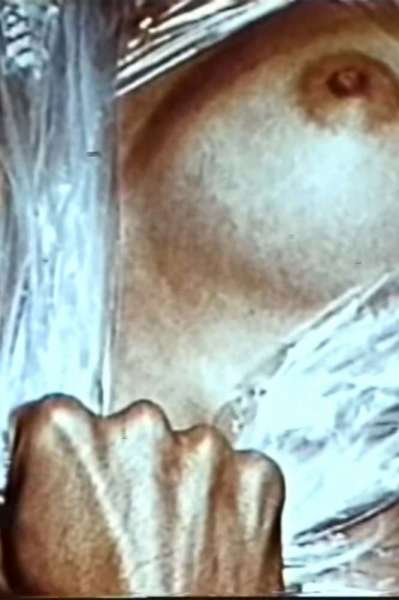
Si vous aimez ce film, faites-le savoir !
- Infos
- Casting
- Infos techniques
- Photos
- Vidéos
- Passages TV
- Citations
- Personnages
- Musique
- Récompenses
Genres Documentaire
Rape Culture is a 1975 film by Cambridge Documentary Films, produced by Margaret Lazarus and Renner Wunderlich. It was updated in 1983.
In January 1975, Judy Norsigan outlined how the film illustrated "rape culture", through the voices of men and women, including rapists, victims, prisoners, rape crisis workers, and the media.
The film featured prisoners of Lorton Reformatory, Virginia, "Prisoners Against Rape Inc" (PAR), a not-for-profit organisation founded by William Fuller and Larry Cannon on September 9, 1973 in conjunction with women fighting rape. The prison administration "approved" self-help status.
PAR was set up after Fuller wrote to the DC Rape Crisis Centre in 1973 and asked for assistance. The DC Rape Crisis Centre had opened in 1972 in response to the high incidence of rape against women of color. Fuller acknowledged his history of rape, murder, and prison rape. He wanted to stop being a rapist. This resulted in a co-operative effort.
The women from the DC Rape Crisis Centre who initiated work with PAR were Loretta Ross, Yulanda Ward and Nkenge Toure. Ross has said that whilst the relationship was seen initially as controversial, it was one of the more interesting aspects of her work at the DC Rape Crisis Centre in the 1970s and 80's. In interview with Joyce Follet, Ross observed that in the work of the DC Rape Crisis centre they could bandage up women all they wanted to, but if they did not stop rape what was the point. Maragaret lazarus, the films producers said of this relationship that the work was "groundbreaking".
The film featured Mary Daly, radical feminist philosopher, academic, and theologian, and Author and Artist Emily Culpepper. They discussed rapism as an intellectual concept, and phallocentric morality and "its 'unholy trinity of rape, genocide and war.'".
Doreen McDowell, a rape victim, talked of her experience, how sex fantasies play a part in rape, and how male identified behaviour in women maintained a "state of siege". Powerful statistical evidence, refuting rape myths, law enforcement and legislative views of rape were presented by Joanna Morris, author and statistical co-ordinator for rape crisis centres across the USA.
The film also looked closely at the mass media, how film-makers, song writers, writers and magazines perpetuated the attitudes to rape, which normalised it and even perpetuated rape myths and stereotypical behaviour around rape. Gone with the Wind, Alfred Hickcock's film Frenzy, and Hustler magazine were some of the media used to illustrate the normalisation of rape.
In describing the film, the producers say that it attempts to give real and accurate limits to rape and expand society's narrow and sexist concepts of rape.
Lazarus has said of the film's title that it came from long discussion about what the film was trying to illustrate. She has also expressed the view that the film is the first time "rape culture" was used in its widest accepted sense. A mention of the film in the Congressional Record in January 1978 is the first known occurrence of the term 'rape culture' in national-level American politics.
Commentaires
Postez un commentaire :
Suggestions de films similaires à Rape Culture
Il y a 8965 ayant les mêmes genres cinématographiques, 10080 films qui ont les mêmes thèmes (dont 5 films qui ont les mêmes 4 thèmes que Rape Culture), pour avoir au final 70 suggestions de films similaires.Si vous avez aimé Rape Culture, vous aimerez sûrement les films similaires suivants :
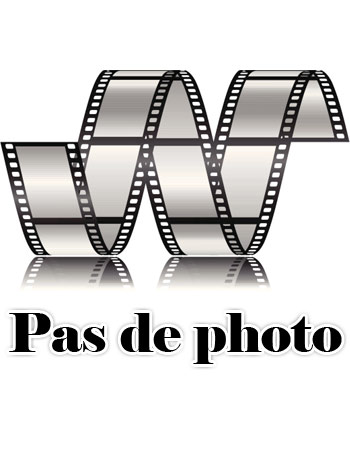
Within Every Woman (2012)
Genres Documentaire
Thèmes Sexualité, Le viol, Documentaire sur le droit, Documentaire sur la guerre, Documentaire historique, Documentaire sur une personnalité, Politique, Documentaire sur la Seconde Guerre mondiale

Land, Gold and Women (2006)
Origine Royaume-uni
Genres Documentaire
Thèmes Sexualité, Le viol, Documentaire sur le droit, Documentaire sur une personnalité

Délivrez-nous du mal (2006)
, 1h41Origine Etats-Unis
Genres Documentaire, Policier
Thèmes L'enfance, Religion, Sexualité, Le viol, La pédophilie, Documentaire sur le droit, Documentaire sur une personnalité, Documentaire sur la religion, Documentaire sur la maltraitance des enfants, Maltraitance des enfants
Acteurs Jeff Anderson
Note78%





Prêtre catholique irlandais venu en Californie, Oliver O'Grady, ou Ollie, a violé des dizaines d'enfants des années 1970 aux années 1990. Le film suit chronologiquement son histoire, par le témoignage de trois de ses victimes, deux femmes et un homme, de parents de victimes, d'Oliver O'Grady lui-même, et de plusieurs autres personnes, dont le père Thomas Doyle, prêtre qui s'attache à ce que l'Église fasse face à ses responsabilités dans ce domaine.

The Invisible War (2012)
, 1h37Réalisé par Kirby Dick
Origine Etats-Unis
Genres Drame, Guerre, Documentaire, Historique, Policier
Thèmes Sexualité, Le viol, Documentaire sur le droit, Documentaire sur la guerre, Documentaire historique, Documentaire sur une personnalité, Documentaire sur la santé
Acteurs Kirby Dick, Amy Ziering
Note75%





Le film traite de la question du viol dans les forces armées américaines et du « Military Sexual Trauma ».
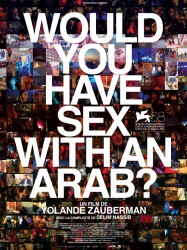 , 1h25
, 1h25Réalisé par Yolande Zauberman
Origine France
Genres Documentaire
Thèmes Afrique post-coloniale, Religion, Sexualité, Documentaire sur le droit, Documentaire sur la guerre, Documentaire historique, Documentaire sur une personnalité, Documentaire sur la politique, Documentaire sur la religion, Politique, Religion juive
Acteurs Juliano Mer-Khamis
Note58%





Dans les bars de Tel Aviv, la nuit, la réalisatrice demande à des jeunes Juifs s'ils auraient des relations sexuelles avec des Arabes, et à des jeunes Arabes s'ils feraient l'amour avec des Juifs. Chacun donne son avis, avec plus ou moins d'explications, sur le symbole que cela peut représenter pour eux (beaucoup l'ont déjà fait) ou au contraire leur refus. Des jeunes issus de familles mixtes (un parent juif, l'autre arabe) sont également interviewés. Le film recueille aussi les témoignages du journaliste Gideon Levy et de l'acteur Juliano Mer-Khamis, de mère juive et de père arabe, assassiné en 2011 par des Palestiniens à Jénine.

Prisoners of a White God (2007)
, 51minutesGenres Documentaire
Thèmes Le thème de l'éducation, L'enfance, Esclavagisme, Religion, Sexualité, Erotique, Prostitution, Documentaire sur le droit, Documentaire sur une personnalité, Documentaire sur la politique, Documentaire sur la prostitution, Documentaire sur la religion, Documentaire sur la maltraitance des enfants, Politique, Maltraitance des enfants
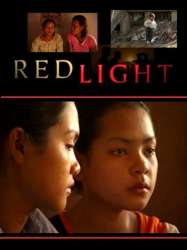
Redlight (2009)
Réalisé par Adi Ezroni
Origine Etats-Unis
Genres Documentaire, Policier
Thèmes L'enfance, Esclavagisme, Sexualité, Erotique, La pédophilie, Prostitution, Documentaire sur le droit, Documentaire sur une personnalité, Documentaire sur la prostitution, Documentaire sur la maltraitance des enfants, Maltraitance des enfants
Acteurs Lucy Liu, Reena
Note73%





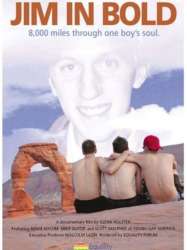
Jim in Bold (2003)
Origine Etats-Unis
Genres Documentaire
Thèmes Maladie, Sexualité, Le suicide, Homosexualité, Documentaire sur le droit, Documentaire sur l'homosexualité, Documentaire sur une personnalité, Documentaire sur la santé, Folie, Le handicap, LGBT, LGBT
Note75%





The film, titled after a poem by Wheeler, details the abuse he received at the hands of his classmates because of his homosexuality. It also presents interviews and a cross-nation road-trip with members of Young Gay America, an online teen organization for gays, and compares the teasing and physical abuse Jim suffered to the increasingly open attitudes towards homosexuality six years later when the film was first shown.

Nefarious: Merchant of Souls (2011)
, 1h36Réalisé par Benjamin Nolot
Origine Etats-Unis
Genres Documentaire, Policier
Thèmes L'enfance, Esclavagisme, Sexualité, Erotique, La pédophilie, Prostitution, Documentaire sur le droit, Documentaire sur une personnalité, Documentaire sur la prostitution, Documentaire sur la maltraitance des enfants, Maltraitance des enfants
Acteurs Bill Oberst Jr.
Note73%





The first scene of the film is a reenactment of a kidnapping. A girl is kidnapped and brought to the apartment of a criminal organization, where she is confined with other girls in a room with a creaky ceiling lit by a flickering lightbulb. The girls are naked and cry from fear as men examine them and shout commands and threats at them. One girl is dragged away into another room. The girls are then brutally abused until they become sexually submissive. These events take place in a small European town, possibly in Moldova. The film asserts that 10% of the population of Moldova has been sexually trafficked. From there, the film tracks the girls through Serbia and Croatia to Amsterdam's red-light district and markets in Berlin and Las Vegas. Among legal prostitution in cities, the slavery goes undetected. Slaves are depicted in confinement, at their places of work, and as they are sold. Many of the girls are orphans and all are either initially kidnapped or tricked into forced prostitution. The methods that the traffickers use to keep the girls include hard drugs, mind control, and both sexual and physical abuse.

Out in the Silence (2009)
, 1h5Origine Etats-Unis
Genres Documentaire
Thèmes Religion, Sexualité, Homosexualité, Documentaire sur le droit, Documentaire sur l'homosexualité, Documentaire sur une personnalité, LGBT, LGBT
Note64%





 Connexion
Connexion